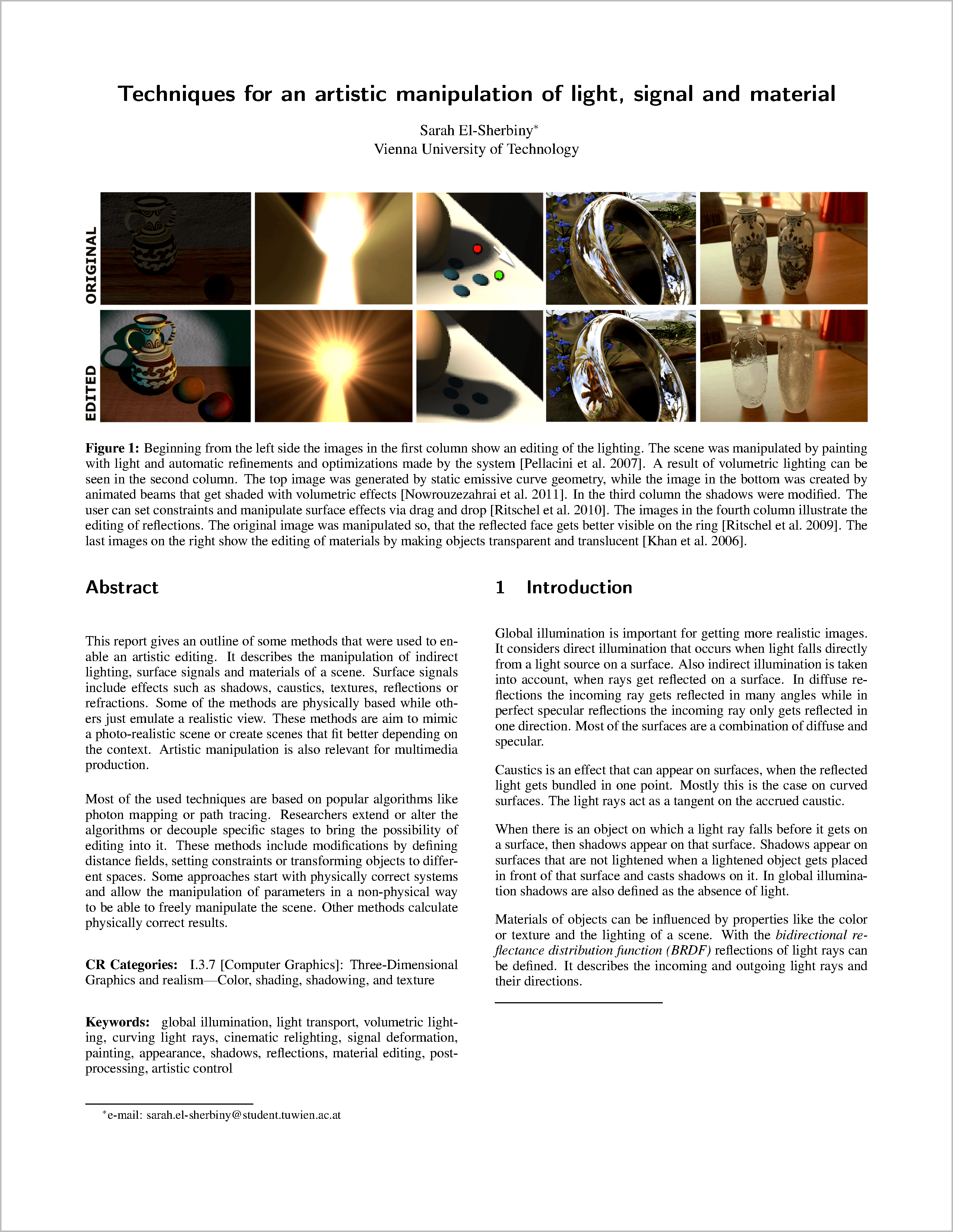Two Minute Papers – Adaptive Fluid Simulations
/in News/by zsolnaiTwo Minute Papers is back with some adaptive fluid simulation awesomeness!
Ray Tracing / Subsurface Scattering @ Function 2015
/in News/by zsolnaiThe seminar on ray tracing, global illumination and subsurface scattering from Function 2015 is now available!
Two Minute Papers – Manipulating Photorealistic Renderings
/in News/by zsolnaiPhotorealistic rendering (also called global illumination) enables us to see how digital objects would look like in real life. It is an amazingly powerful tool in the hands of a professional artist, who can create breathtaking images or animations with. However, for the longest time, artists didn’t use it in the movie industry because it did not offer a great artistic freedom – after all, it works according to the laws of physics, which are exact. This piece of work enables us to apply artistic edits to photorealistic renderings easily and intuitively. I believe this one has the potential to single-handedly change the landscape of photorealistic rendering on a production scale.
Two Minute Papers – Digital Creatures Learn To Walk
/in News/by zsolnaiIn this episode, we are going to talk about computer animation, animating bipeds in particular. If we have the geometry of a creature, we need to specify the bones, the muscle routings and the muscle activations to make them able to walk. Depending on the body proportions and types, it may require quite a bit of trial and error to build muscle layouts so the creature doesn’t collapse. Making them walk is even more difficult! This piece of work not only makes it happen for a variety of bipedal creatures, but the results are robust for a variety of target walking speeds, uneven terrain and other, unpleasant difficulties.
Two Minute Papers – Hydrographic 3D Printing
/in News/by zsolnai3D printing is a technique to create digital objects in real life. This technology is mostly focused on reproducing the digital geometry itself – colored patterns (textures) still remains a challenge, and we only have very rudimentary technology to do that.
Hydrographic printing on 3D surfaces is a really simple technique: you place a film in water, use a chemical activator spray on it, and shove the object in the water.
However, since these objects start stretching the film, the technique is not very accurate, and it only helps you putting repetitive patterns on these objects.
Computational Hydrographic Printing is a technique that simulates all of these physical forces that are exerted on the film when your desired object is immersed into the water. Then, it creates a new image map taking all of these distortions into account, and this image you can print with your home inkjet printer. The results will be really accurate, close to indistinguishable from the digitally designed object.
Recent posts
- Impressions from the NATO conference June 25, 2019
- Speaking at this year’s NATO conference June 6, 2019
- My talk in the European Political Strategy Centre October 31, 2018
- SIGGRAPH Talk August 20, 2018
- Sponsoring CESCG May 31, 2018


